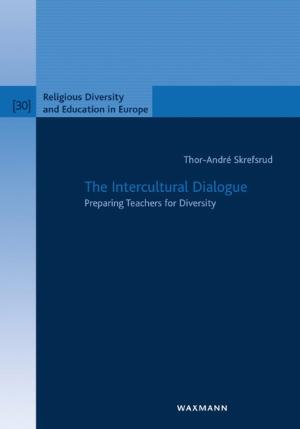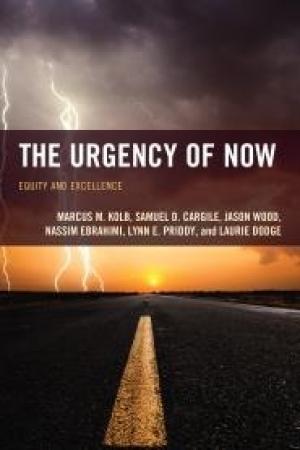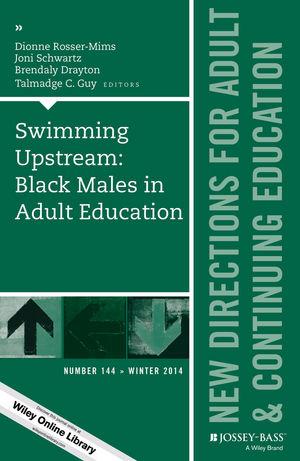Resources by William Scott Harralson

Changing demographics in Norway offer new challenges and great opportunities for the field of education. Today Norwegians find themselves living in an interconnected world where the individual that one might consider to be “strange” because of cultural differences is no longer someone that is only viewed from a distance. In many cases, yesterday’s stranger is now one’s next door neighbor or cohort in the classroom (5). How should an instructor approach cultural differences that exist between teacher and student? How does he or she navigate cultural differences between students? These are among the issues that are carefully examined in The Intercultural Dialogue: Preparing Teachers for Diversity. Chapter One introduces readers to the concept of intercultural dialogue (ID). At its core, ID is a constructive and positive interaction between persons or groups which are culturally different from each other (12). One of the central reasons for educators to embrace ID is the need to alter the dominance of monocultural education that exists in many European countries (16). Chapter Two considers ID from a transcultural perspective. A transcultural (as distinguished from a multicultural) perspective is one which seeks to articulate today’s contemporary and altered cultural constitution, thus abandoning conventional views of cultural formations that are no longer viable (13-14). Chapter Three identifies some of the fundamental features of religion including transreligiosity, and discusses the centrality of religion in culture (53). In Chapter Four we find a selection of influential theoretical perspectives on communicative interaction which are offered as frameworks for the understanding of dialogue (69). Next the author examines the Norwegian government’s curriculum framework for teacher education and cites the preconditions for ID in the context of cultural diversity educational policies (109). In Chapter Six, readers discover that ID is most effective because of its unsettled and vulnerable qualities. For an intercultural dialogue to emerge, instability and uncertainty must be part of one’s understanding of ID because “the power of dialogue is located in its weakness”(136). For this reviewer Skrefsrud’s closing references to the dichotomy between power and weakness evoke images of Christian scripture. There is a core Biblical passage wherein the apostle Paul reflects upon a life-changing encounter between himself and Jesus Christ. The text speaks of the redemptive and often paradoxical power of God’s grace. In the midst of Paul’s affliction Christ provides words of comfort: “My grace is sufficient for you, for My strength is made perfect in weakness.” Paul is therefore encouraged to embrace his hardship rather than reject it when he states, “For when I am weak, then I am strong” (2 Cor 12:7-10 [NKJV]). I submit that it is Skrefsrud who prophetically wades into the often turbulent waters of cultural diversity and offers his own words of grace for today’s educators. Some readers will be challenged to embrace a new paradigm for educating both present and future teachers. It is no longer adequate for teachers to develop and maintain academic proficiency alone; Educators must also receive training to become interculturally competent (11). Skrefsrud implores educators to reject the adoption of cultural stereotypes and instead model behaviors that convey a sense of authentic respect for those students who are culturally different. A pedagogy that is aware of what it really means to have an affirming view of students’ complex backgrounds is thus a pedagogy that all students will benefit from (5). Despite its European roots, the underlying message of this book will resonate with many American educators because of our respective experiences of difficulties coping with racial and cultural pluralism. It is well documented that the American educational system, like Norway’s, has not always responded to diversity in positive or constructive ways. We are reminded that the forced enslavement of Africans and African-Americans in the U.S. began around 1619 and ended in 1865. But the sting of xenophobia in many American schools did not stop there. For almost ninety years following the abolition of slavery, America continued to embrace state-sanctioned racial segregation and cultural hegemony in public education. In 1896, the U.S. Supreme Court affirmed the notion that “separate but equal” schools were not only legally permissible but socially desirable (see Plessy v. Ferguson [1896] 163 U.S. 537). “Separate but equal” segregated schools remained lawfully in existence until 1954 when the Supreme Court finally proclaimed that every individual, regardless of race, is entitled to equal protection under the law. In short, “separate but equal” is inherently unequal and therefore unconstitutional (see Brown v. Board of Education [1954] 347 U.S. 483). While Skrefsrud makes no direct reference to the issue of race in America, I think it is fair to assume that he was in some measure influenced by this nation’s story. The Intercultural Dialogue also serves to remind us that culture strongly influences the political landscape. America recently elected its 45th President of the United States. The 2016 presidential campaign was punctuated by heated rhetoric concerning U.S. immigration policy. One candidate rose to prominence by advocating “building a wall” to separate the American border with Mexico, and endorsing the imposition of a temporary ban on the immigration of any Muslim into the U.S. These initiatives were proposed under the campaign banner “Make America Great Again.” Some commentators believed that these ideas reflected an intense desire to draw a bright line of demarcation between so-called traditional American cultural values and the cultures and ethnic groups that the candidate found to be alien and therefore socially inferior. In contrast, Skrefsrud advocates in favor of extending respect and preserving the dignity of those immigrants who are culturally different: The hermeneutical challenge is therefore to maintain the fact that an understanding of the stranger and the strange actually is possible, while at the same time recognize and respect the stranger as the other….The challenge is to approach otherness in a way that allows for distance and closeness at the same time. (49) If questioned about America’s immigration debate, Skrefsrud would likely reject the propositions highlighted above as intellectually unsound, unworkable, and antithetical to prevailing Western notions of democracy and social justice. The broad concept of “preparing teachers for diversity,” especially with respect to college professors, has already been met with some resistance. There are American educators who raise legitimate concerns about (a) the extent to which multiculturalism and cultural awareness impact one’s ability to effectively teach adults, and (b) whether college educators will be asked to alter or adjust their thinking and behavior as they interact with students whose cultural identities differ from theirs. Others may question whether ID is perhaps yet another “political correctness” educational policy initiative that may be incompatible with the instructor’s personal views. Skrefsrud anticipates criticism by offering a cogent rationale for his thesis. Norway, like America, is no longer a static cultural melting pot. It is now a crucible, that is, a dynamic situation involving “culturally other” immigrants in which concentrated and sometimes volatile forces interact to cause or influence change. The arcane notion that immigrants to the United States must completely purge themselves of their cultural identities, and by assimilation adopt the majority’s dominant cultural norms, is simply no longer workable (38-39; 138). In the spirit of King, Gandhi, Mandela, and others, Skrefsrud joins the call for people of goodwill to move beyond mere tolerance of those who are culturally different. Toleration, like accommodation, is beneficial but ultimately inadequate. We must elevate our sights to higher ground which seeks mutual respect, authenticity, and understanding. An average book informs but an outstanding book sparks self-reflection and may even compel the reader to act in new and bold ways. The Intercultural Dialogue: Preparing Teachers for Diversity is an outstanding read that I recommend for any educator or educational policy-maker. The analysis offered by Skrefsrud has the potential to move educational discourse a significant step closer towards the day when all humanity realizes a beloved world community.

All of higher education, with community colleges leading the way, must sense and respond to the need to evolve to serve a new and increasingly diverse student body. We live in an era where students will increasingly require myriad new approaches to higher education in order for every student to realize their potential (8). That is the central thesis of The Urgency of Now: Equity and Excellence, one volume in a series sponsored by the Association of Community College Trustees. Chapter one sets forth key arguments in favor of the need to transform community colleges in response to changing student demographics. Chapter two is concerned with the shifting role of accreditation in higher education. In chapter three, the authors address the current system’s reliance upon the credit hour as a time-based model for allocating academic course credit and implore administrators to transition to competency-based models. Chapter four offers a comprehensive blueprint for creating an innovative community college-wide outcomes assessment system. Finally, chapter five targets the critical need for administrators to engage faculty in new and meaningful ways in order to successfully implement positive change that will result in improving instructor teaching and student learning. Today there are increasing demands from public and private sector stakeholders for greater accountability and transparency by colleges and universities (19-20). Thus, “to insure equity in the form of economic opportunity for current and future generations” and to “provide demonstrable learning outcomes that position students for success,” there is an urgent need for new models. At the heart of this call for transformation is the notion that higher education must become a student-centered system rather than defaulting to the traditional faculty-centered model. Community colleges must be at the epicenter of determining what the essential ingredients of such a system should be (113). The Urgency of Now argues that higher education must not simply react to changing demographics in America but it must embrace this phenomenon. The priority for the twenty-first century community college must be student needs and student learning (113). This will require that faculty abandon the function of serving primarily as “fountains of knowledge” and instead embrace a new role as “curators of content” and “tour guides of information” (115). Understanding context is critical. America currently finds itself in the midst of the 2016 United States presidential election cycle. College affordability, rising student debt, and declining funding for public colleges and universities are issues now under debate by candidates for the nations' highest political office. The election comes at a time when the gulf that exists between those students and families who lack the economic resources needed to pay college tuition versus those who can readily afford the cost of higher education continues to rise. The Urgency of Now adds to the political discussion by identifying some of the efforts championed by U.S. president Barack Obama to increase community college enrollment and strengthen public-private partnerships that will improve employment opportunities for those who complete a certificate or degree program (5-6). One must acknowledge that, in the face of opposition from his political adversaries, Barack Obama has advanced the goal of achieving equal access to college for all Americans regardless of race, ethnicity, or socio-economic status. Readers will find that this book offers a timely contribution to public discourse on these topics of concern to many among the American electorate. An average book informs but an outstanding book sparks self-reflection and may even compel the reader to act in new and bold ways. The Urgency of Now: Equity and Excellence is an outstanding read that is recommended for anyone concerned with the plight of higher education. This book presents reasoned arguments which support the goal of reforming community colleges chiefly as a matter of sound public policy and implicitly to further the Judeo-Christian imperative which calls for social justice.

What person of sound mind would make a conscious decision to swim upstream against the current of turbulent waters? The correct answer is “probably no one.” Swimming upstream requires not only excellent navigational skill but perhaps, more importantly, demands that one possess the tenacity and spirit of a survivor. That is precisely why the metaphor “swimming upstream” is so appropriate in describing the plight of scores of African-American men who elect to enter and succeed in higher education (1). Swimming Upstream: Black Males in Adult Education is one volume in the series entitled: New Directions for Adult and Continuing Education. This anthology is intended “to make space for the experience and voices of Black men in the canon of adult education literature, to promote a critical assessment of institutional policies and practices, and to foster awareness and involvement among adult educators” (89). The format of this book is well-suited for academic settings. Each essay is preceded by a short introductory paragraph. At the close of each chapter the authors provide a robust list of reference sources that should prove helpful for students and educators alike. The first chapter discusses the impact of race and racism in the American adult educational system. Chapter two addresses myths and stereotypes employed to depict Black men and their influence on educational attainment. Chapter three explores the reasons for entering adult basic education programs and the role of gender identity. The topic of high school equivalency is discussed in chapter four. Chapter five addresses young Men of Color and engagement in adult learning. Chapter six is concerned with college reentry for African-American males. Chapter seven addresses the sobering topic of Black male college study following a term of incarceration. Chapter eight discusses military veterans and access to the GI Bill to pay educational expenses. The final essay, chapter nine, culminates with a call to action for educational practitioners. Understanding context is critical. In recent years a growing constituency has emerged that believes society has entered a post-racial or “colorblind” era. They advance the proposition that one’s race or ethnicity has no bearing on one's ability to survive and prosper in modern America. I strongly disagree with the post-racial theorists but recognize that it would be helpful for books like Swimming Upstream to squarely confront the legitimate concerns of post-racial proponents. In so doing one hopes that individuals on both sides of the argument will ultimately reach a consensus that the mission of ensuring equal educational opportunities for every individual remains a struggle that must still be waged today. Swimming Upstream moves that discussion forward with compelling statistical and anecdotal evidence. In 1903, the late W.E. B. DuBois prophesied in The Souls of Black Folks that the problem of the twentieth century would be the “color line” – the invisible yet palpable line of demarcation between Caucasians and African-Americans that was often characterized by overt discrimination and bigotry. More than one century later the question of whether “Black lives matter” is, in my view, a logical extension of DuBois’ central thesis. It can be argued that Swimming Upstream may unintentionally serve to remind us that certain remnants of the issues raised by DuBois remain unresolved today. For some readers this will speak to the relevance and timeliness of Swimming Upstream. An average book informs and a good book intrigues the reader. But an excellent book sparks self-reflection and may even compel one to act in new and bold ways. As a college instructor I routinely survey students to ascertain why they decided to embark on a college education. The primary responses from students generally, and African-American males specifically, are: “I want to make my parents proud of me” and “I want to set a positive example for my children/siblings/family.” Those learners confirm what I have long known to be true: that given equality of economic and institutional opportunities, African-American males have no less potential to achieve academic and vocational success than any other segment of the American population. College study may not be right for everyone but it must become accessible for anyone. Arguably that is the controversial and exciting rationale for Swimming Upstream. It is an excellent anthology that serves to affirm our collective belief in the basic humanity and intellectual capacity of every individual.